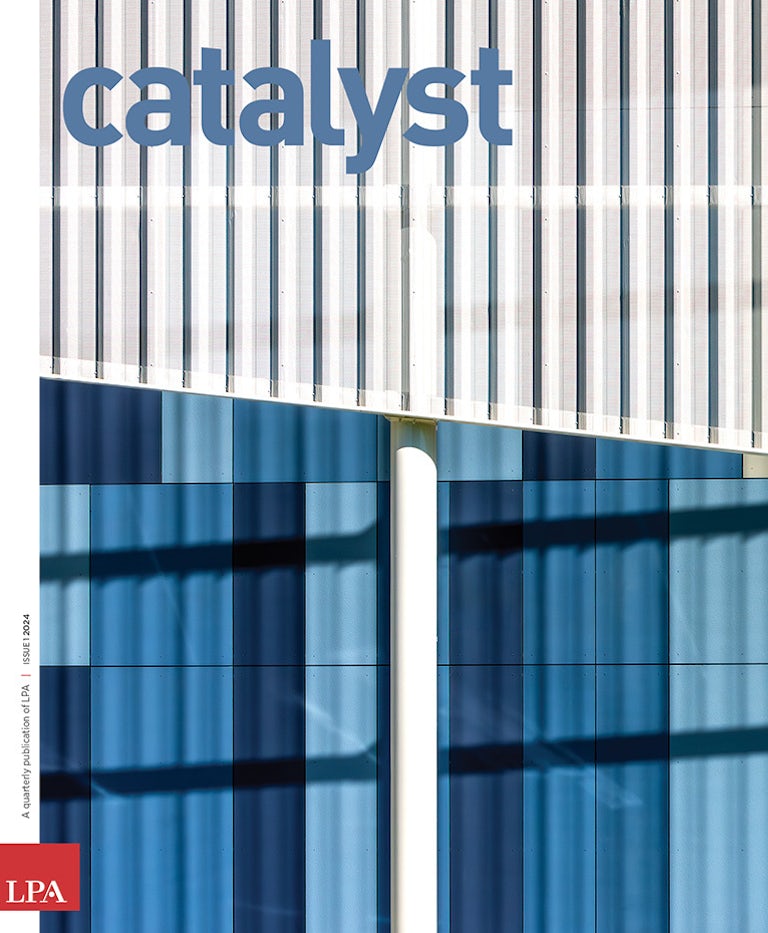What It’s Like to be a Structural Engineer at LPA Design Studios
When I was working for traditional structural engineering companies, I was warned about integrated design firms. You’ll just be working for the architects, and they’ll tell you what to do, and they’ll still bring in outside consultants for big projects, I was told.
My experience has been the opposite. At LPA, we have built a world-class structural team that has a seat at the table from the very start of the project. Instead of second-class citizens, we are an integral part of the team, able to influence projects in ways I would never be able to in a traditional approach.

When you are a consulting structural engineer, you often come into a project so late that a lot of the design decisions have been made. Traditionally, you’re just trying to fit the structure within the architecture.
At LPA, the structural team participates in the proposal, the pre-schematics and the conceptual design. We are empowered to bring structural into the fundamental discussions of the build-ing’s form and programming. We work with the clients on their goals. I feel ownership over projects because I can help conceptualize them and make them a reality.
Part of that is simply LPA’s culture. LPA didn’t add disciplines to capture revenue. We expanded our practice because we believed it would lead to better design. The firm sets performance goals on every project and realized the only way to achieve those goals was to create a collaborative, multidiscipline environment.

That’s the shift in the approach. Some firms keep structural engineers in-house for less challenging projects and then contract with structural consultants on the larger, more difficult projects. But we don’t do that. LPA’s structural engineering team takes on the most challenging design problems at the same level as our architects and other internal engineering, interiors and landscape experts, because we’ve learned through decades of working this way that early engagement from multiple different design perspectives is the most effective way to approach complex design challenges.
This has resulted in an array of successful projects and multiple structural design awards, including two recent national level awards.
The culture at LPA is very open-minded. People are encouraged to come up with ideas and present them. Younger architects, engineers — it doesn’t matter. It’s a culture that lends itself to having people who might be shy or introverted feel safe to express themselves and bring ideas to the table. Everyone knows they’ll be accepted.
On several recent projects, the structural engineering team has been able to make a significant difference in the final design. In Tracy, California, plans for a new multigenerational recreation center originally called for two buildings. We helped design a plan for one building with one roof, which changed the orientation, performance and the spaces for the public. The final result is a net-zero-energy building that will serve the community in many ways.
The recent seismic retrofit of the University of California, San Diego’s historic York Hall is another great example of architecture and structural engineering coming together. Most seismic projects led by structural engineering firms rely on architects only to patch up the areas where structural intervention is needed. In this case, we were able to bring value to the seismic retrofit by partnering with an engaged LPA architectural team to preserve the building’s historical integrity and address other needed building improvements. The team’s targeted approach resulted in cost savings of $3 million for the university and is serving as a model for future UCSD seismic retrofits.
I could never have imagined this type of role and influence in a traditional structural consultancy.
At LPA, I feel like I can truly make an impact as a structural engineer. I’m not just fitting the structure to an already-designed building. I think that’s the fun and challenging aspect of working in an integrated design firm. You can be truly a structural engineer and not just a person who does calculations to fit the architect’s vision.
Harshda Parada leads LPA’s structural engineering practice in San Diego, San Jose and Sacramento, spearheading major civic, education, life science and biotech projects. She is also currently serving as the President of the Structural Engineers Association of San Diego (SEAOSD).















